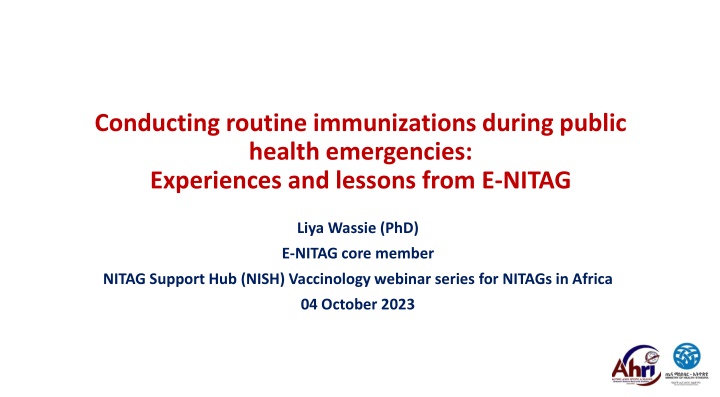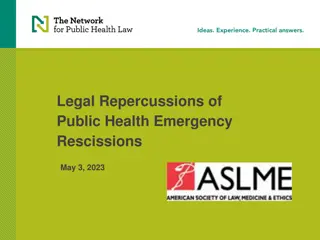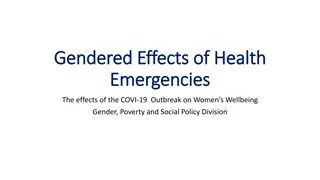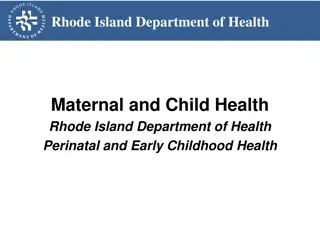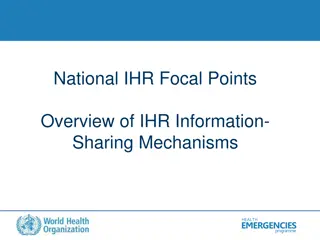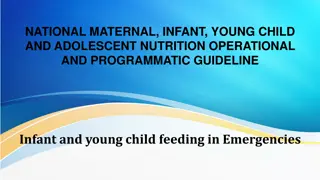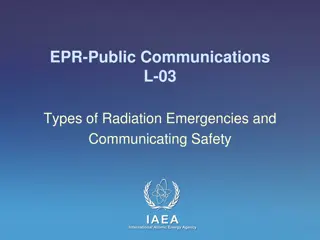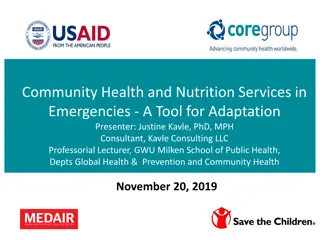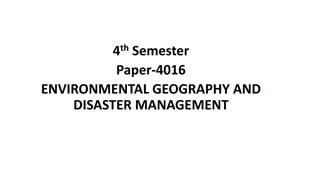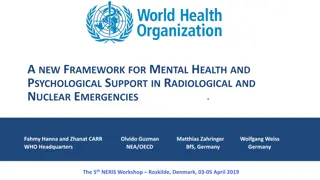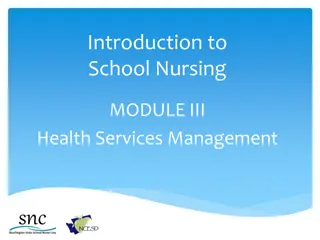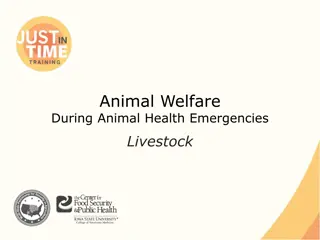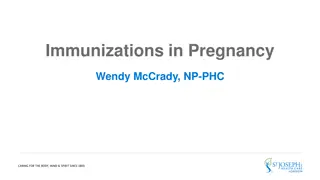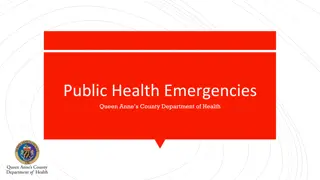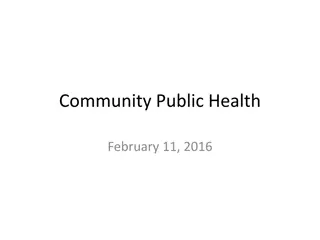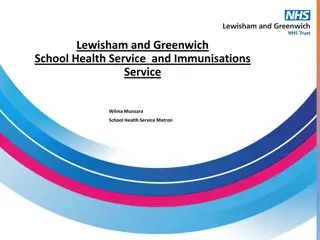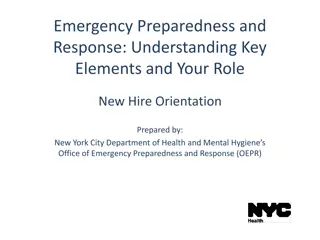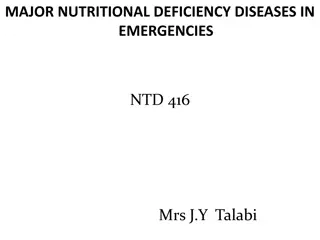Challenges and Lessons in Routine Immunizations During Public Health Emergencies
Conducting routine immunizations amidst public health emergencies poses challenges such as service disruptions, incomplete immunizations, dropouts, and poor access. The context in Ethiopia shows progress in immunization services but also highlights areas for improvement, including access to new vaccines, supply constraints, and weak surveillance systems.
Download Presentation

Please find below an Image/Link to download the presentation.
The content on the website is provided AS IS for your information and personal use only. It may not be sold, licensed, or shared on other websites without obtaining consent from the author.If you encounter any issues during the download, it is possible that the publisher has removed the file from their server.
You are allowed to download the files provided on this website for personal or commercial use, subject to the condition that they are used lawfully. All files are the property of their respective owners.
The content on the website is provided AS IS for your information and personal use only. It may not be sold, licensed, or shared on other websites without obtaining consent from the author.
E N D
Presentation Transcript
Conducting routine immunizations during public health emergencies: Experiences and lessons from E-NITAG Liya Wassie (PhD) E-NITAG core member NITAG Support Hub (NISH) Vaccinology webinar series for NITAGs in Africa 04 October 2023
Ethiopias context Ethiopia 2000 2017 2023 126,527,060 (11th)* Total population 67,031,867 Urban 9,807,289 (14.6%) 27,959,894 (22.1%) Females 49.8%** Fertility rate 6.56 3.98 Median age (yrs) 15.1 18.8 Children under 1 yr 3.1%** Children under 5 yrs 14.6%** Source: Worldometer (www.worldometers.info); *Global rank; **Health and Health related indicators; FMoH, 2016/2017
Ethiopias context Immunization is one of the basic health services 395 hospitals 3,704 HC, 18,202 HP > 21,000 HFs providing immunization services Under 5 mortality rate declined from 123 in 2005 to 59 in 2019 Vaccines General Immunization Coverage 2017 68% 73% 64% 65% 2022 64% 68% 61% 68% OPV3 BCG PCV3 DPT3-HepB3-Hib3 (Pentavalent 3) Measles1 Measles2 Rota 59% 56% 48% 65% Not available 67% Source: EDHS 2000-Mini EDHS 2019 Source: WHO Immunization dashboard, WHO Immunization Data portal
Immunization services during public health emergencies/ pandemic situation, conflict and humanitarian crisis Challenges Health service disruption, precluding routine immunization most unit facilities and personnel diverted to curb the pandemic 62.2% incomplete immunization, despite facility delivery (~73%); 85% took BCG and OPV Immunization dropouts: Penta1 (84%) to Penta3 (72%); PCV1 (84%) to PCV3 (74%) Poor maternal health literacy and economy Poor service-seeking condition (fear of COVID-19 during transportation) Long waiting time at health facilities Similar delivery places for COVID-19 screening/ immunization and other EPI vaccines
Other challenges for better immunization services Access to proven/new vaccines Expensive cost and financing needs Global supply constraints Hesitancies and resistance for new vaccines Internal displacement and humanitarian crisis due to conflicts Poor vaccination coverage in some settings (pastoralist and semi-pastoralist communities) Catch-up vaccination strategies (for missed or interrupted doses) recently introduced Infrastructure: lack of cold chain facilities Weak surveillance system Lack of data digitalization Delays in reporting, data quality issues Staff turn-over Estimation of diseases burden Poor regulatory frameworks in place to follow S/AE or PMS Poor research landscape and lab infrastructure/capacity
E-NITAGs role in the immunization services Advise to introduce COVID-19 vaccines Efforts to make routine immunization and continued measles vaccination campaigns as one of essential services during the ongoing pandemic Advise to the MoH: Vaccine delivery using chartered airplane Use of mobile team Service delivery through humanitarian organizations (IRC, WHO, UNICEF) and other local CSOs Development of catch-up vaccination guide and implementation of integrated catch-up vaccination service in areas with intensive interruptions
Opportunities for better immunization services National/regional awakening for self sufficiency in vaccine manufactory Political commitment Support from Africa CDC, WHO and others in promoting local vaccine production Capacity building and strengthening for lab infrastructure
